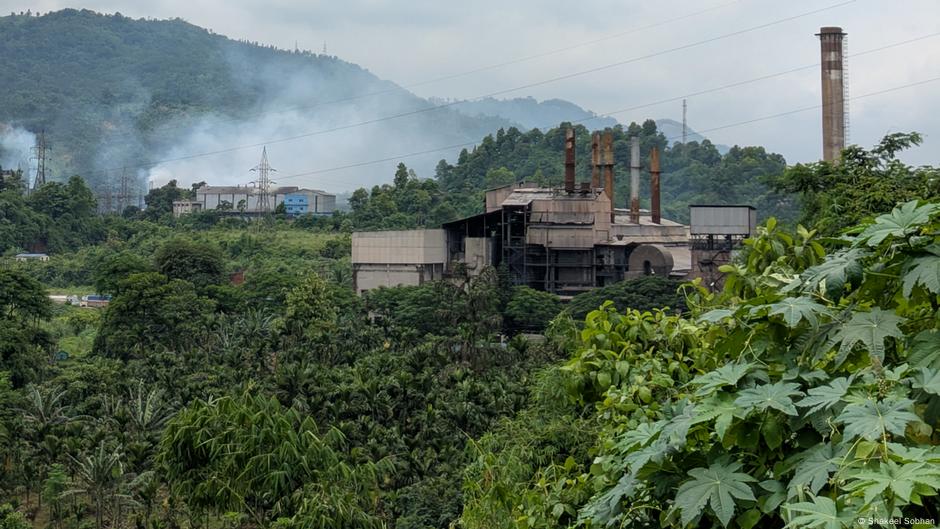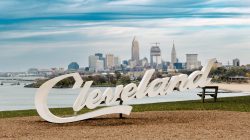The Unseen Crisis: Byrnihat, the World’s Most Polluted City
New Delhi is often cited as the most polluted capital globally, but it does not hold the title of the world’s most polluted city. That distinction belongs to Byrnihat, an industrial town located in India’s northeast. This article explores the reasons behind Byrnihat’s alarming air quality and the challenges faced by its residents.
A Town Surrounded by Industry
Byrnihat may appear similar to other towns in the picturesque northeastern states of Assam and Meghalaya, with lush green hills and scenic river valleys. However, this small town has become a symbol of environmental degradation. According to IQAir’s 2024 report, Byrnihat holds the dubious honor of being the world’s most polluted city, with an average PM2.5 concentration of 128.2 micrograms per cubic meter. This level is over 25 times higher than what the World Health Organization (WHO) considers safe for human health.
The town, home to approximately 70,000 people, is surrounded by around 80 industries, many of which are involved in iron and steel production. Serpentine roads are lined with long rows of trucks, some stalled, others transporting goods to and from factories. The National Highway 40 runs through the town, connecting it to neighboring states and facilitating the movement of goods and people.
Health Impacts of Pollution
The consequences of this pollution are evident in the rising number of respiratory illnesses among Byrnihat’s residents. Dr. Prasanta Kr Brahma, who has treated patients in the area for eight years, has observed a significant increase in cases of respiratory tract infections and other pollution-related issues. Government data analyzed by IQAir shows a 76.77% rise in respiratory infection cases between 2022 and 2024.
Cancer, particularly head and neck cancer (HNC), has also become more common in the region. Studies have linked PM2.5 exposure to an increased risk of HNC, including oral, nasal, and throat cancers. The WHO recommends a maximum PM2.5 level of 5 micrograms per cubic meter, but according to IQAir, 356 out of 359 days in 2024 saw levels exceeding this guideline.
Causes of Pollution
Byrnihat’s pollution problem stems from multiple factors. The town developed into an industrial and transport hub in the late 1990s due to its access to coal and proximity to Guwahati, the largest city in northeast India. Major industries include iron and steel plants, cement factories, and wood manufacturing units. These operations contribute significantly to air pollution.
In 2022, the Meghalaya Pollution Control Board recommended halting construction and limiting truck traffic to reduce PM2.5 levels. Despite the shutdown of several factories, ambient air quality did not improve significantly. In fact, the highest PM2.5 level of 385 was recorded just four days after the closures.
Additional Contributing Factors
Vehicular traffic is another major contributor to Byrnihat’s pollution. The town lies on one of India’s key transit routes, with old, heavy commercial vehicles using low-quality fuel and failing to meet emissions standards. Experts like Dr. Sharad Gokhale of IIT Guwahati emphasize the need for stricter checks on trucks to reduce PM2.5 levels.
Coal transport also plays a role. Open storage of coal leads to fugitive emissions, as dust becomes airborne and spreads across the area. Additionally, burning industrial waste is a common practice, further worsening air quality.
Geography and weather conditions also affect pollution levels. Byrnihat’s bowl-shaped topography traps pollutants, and the lack of rainfall in recent years has led to an accumulation of harmful particles in the air.
Smaller Towns Often Overlooked
Despite its ranking as the most polluted city in 2024, Byrnihat remains largely unnoticed by the public. While attention is typically focused on major cities like New Delhi, smaller towns often go unmonitored and undiscussed. According to experts, many of these areas have extremely high pollution levels that remain hidden from national conversations.
Environmental policy and media coverage continue to center on large urban centers, leaving smaller towns like Byrnihat without adequate support or solutions. As Lucy Marak, a local resident, points out, “Where are we supposed to go if our home becomes unlivable?”
Improving air quality requires political will and comprehensive environmental planning. Without addressing the needs of smaller towns, communities like Byrnihat will continue to suffer the consequences of unchecked pollution.







